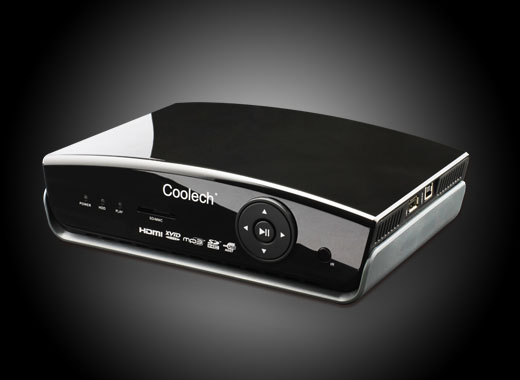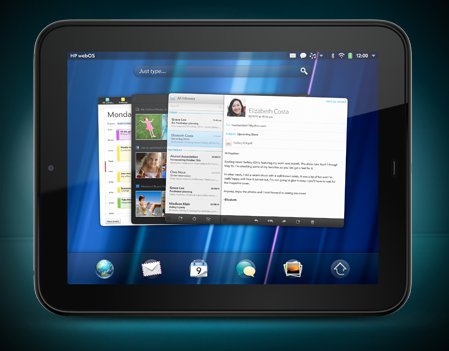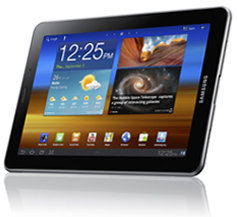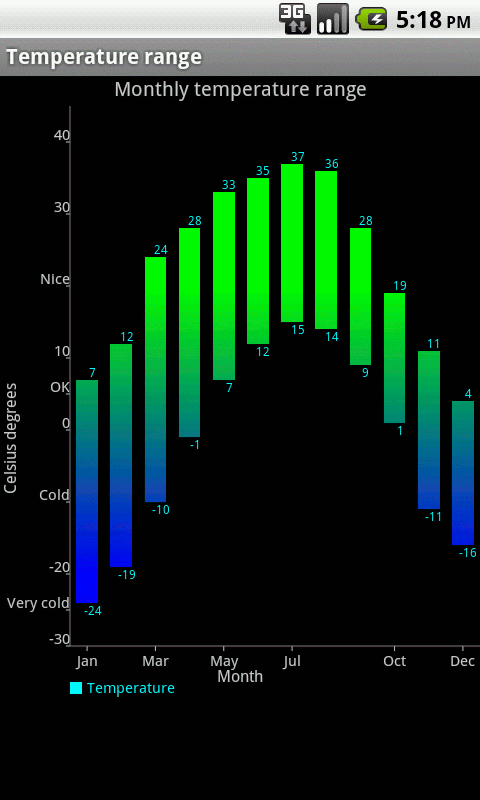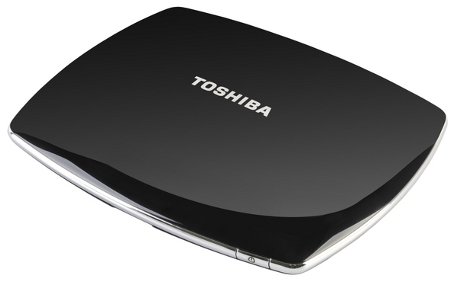Shenzhen Coolech Technology showcased an Android 2.2 Set-top box (Android Deluxe) powered by HiSilicon Hi3716C – a SoC designed around single core ARM Cortex A9 – at IFA 2011 in Berlin. This STB comes with 2 USB host port, 1 USB device port, composite and HDMI video output, SPDIF optical output, an Ethernet port and a SD Card reader. Here are the technical specifications of Android Deluxe set-top box: Description Operating System Android 2.2 Processor High-performance core solo ARM Cortex A9 processor 1GHz Hardware JAVA acceleration Graphic Unit Enhanced full-hardware 2D/3D graphics acceleration engine, OpenGL Video Connections HDMI1.4; CVBS; Audio Connections HDMI1.3; Stereo; Optical S/PDIF AC Adapter Input: 100-240V Output: 12V/3A SATA Interface SATA II x1 or eSATA x1 USB Interface USB 2.0 Host x2; USB 2.0 Device x1 (Option: USB 3.0 Device) SDIO Interface 8-bit SD input/output x1 DVB Two DVB Channel with PVR Network Interface 10/100 Mbit/s adaptive Ethernet […]
Installing and running Xibo Linux Python Client in Acer Aspire One D255E
I have tried Xibo Linux Python Client 1.3.0 on my Acer Aspire One D255E netbook, here are the steps I followed. Install Ubuntu 10.04 LTS Since the client is only officially supported in Ubuntu 10.04 LTS, I had to install it first. After installation the network (ethernet and wifi) does not work, please visit Installing Ubuntu 10.04 LTS in Acer Aspire One D255E for the instructions to resolve the networking issues as well as make the SD card reader work properly. Upgrade Xibo Server to version 1.3.0 The next step I did was to update the Windows XP server to version 1.3.0. I followed parts of the server installation instructions I previously wrote for version 1.2.0. Download xibo-server-1.3.0.zip Extract its content to c:\xampp\htdocs\xibo Run XAMPP Control Panel and start Apache and Mysql. Go to http://localhost/xibo Enter the admin username and password, it will ask you if you want to do […]
HP to produce more TouchPad and Android 2.3 Port
Following the success of the HP TouchPad at 99 USD, Hewlett Packard will make a final production run for the TouchPad Tablet. HP announced the new production in “The Next Bench Blog” in a post entitled “More TouchPads on the Way” on the 30th of August 2011: Despite announcing an end to manufacturing webOS hardware, we have decided to produce one last run of TouchPads to meet unfulfilled demand. We don’t know exactly when these units will be available or how many we’ll get, and we can’t promise we’ll have enough for everyone. We do know that it will be at least a few weeks before you can purchase. I can only imagine they are planning a new production run to get rid of components inventory as if it is sold for 99 USD, and the real cost is 318 USD they would make a large loss. Android 2.3 for […]
Pogoplug Mobile: NAS for Mobile Devices
Cloud Engines is at IFA 2011 introducing the Pogoplug Mobile, a linux based NAS products specifically aimed at smartphones. It has a USB port to connect mass storage devices as well as a SD Card slot and an Ethernet port. There are 2 main use cases: Streaming: With a hard drive connected to the device (NTFS, FAT or other file systems are supported), you can stream music or video to your device from any place in a world as long as you have internet connectivity via 3G or Wifi. Media Upload: You take pictures or shoot videos with your smartphone and can upload them unto your hard drive via Pogoplug Mobile. To do those 2 tasks you’ll need to install an app on your iPhone or Android device. When you stream videos to your smartphone, the device will transcode the video to a format adapted to your smartphone, so that […]
Samsung Galaxy Tab 7.7 Android Tablet
On September 1, at the IFA 2011 in Berlin, Samsung unveiled the Samsung Galaxy Tab 7.7 tablet powered by a 1.4GHz dual-core processor, probably Samsung Exynos Cortex-A9 processor used in Samsung Galaxy S2. Nobody could have guessed but the Samsung Galaxy Tab 7.7 actually features a 7.7″ touchscreen display using Super AMOLED Plus technology (as in Samsung Galaxy S2 smartphone), at first for a screen of this size. The resolution is 1280×800 (WXGA). It is almost as thin as Toshiba AT200 tablet with a thickness of 7.89 mm (vs 7.7 mm) and weights only 335 grams. Here are the specifications of the Samsung Galaxy Tab 7.7: Display: 7.7″ 1280×800 (WXGA) Super AMOLED Plus Processor: 1.4 Ghz Dual Core application processor Network: LTE & HSPA + 21Mbps | Wifi 802.11 a/b/g/n Memory: 16/32/64 GB movi NAND + microSD 9up to 32 GB) Cameras: 3MP AF LED (Main) + 2 MB FF […]
Drawing Charts in Android with AChartEngine Library
AChartEngine is a charting library for Android applications that currently supports the following chart types: line chart area chart scatter chart time chart bar chart pie chart bubble chart doughnut chart range (high-low) bar chart dial chart / gauge combined (any combination of line, cubic line, scatter, bar, range bar, bubble) chart cubic line chart They announced that new chart types would be added in future release (Current version is 0.7.0). You can follow the updates for the library on Google Code or Facebook at http://www.facebook.com/achartengine. You can download the aChartEngine library on Google Code. You can also download some demo code such as TemperatureChart.java which display the following chart with just 100 lines of code including comments. Here’s the code (TemperatureChart.java) to display the Chart above:
|
1 2 3 4 5 6 7 8 9 10 11 12 13 14 15 16 17 18 19 20 21 22 23 24 25 26 27 28 29 30 31 32 33 34 35 36 37 38 39 40 41 42 43 44 45 46 47 48 49 50 51 52 53 54 55 56 57 58 59 60 61 62 63 64 65 66 67 68 69 70 71 72 73 74 75 76 77 78 79 80 81 82 83 84 85 86 87 88 89 90 91 92 93 94 95 96 97 98 99 100 101 102 |
** * Copyright (C) 2009, 2010 SC 4ViewSoft SRL * * Licensed under the Apache License, Version 2.0 (the "License"); * you may not use this file except in compliance with the License. * You may obtain a copy of the License at * * http://www.apache.org/licenses/LICENSE-2.0 * * Unless required by applicable law or agreed to in writing, software * distributed under the License is distributed on an "AS IS" BASIS, * WITHOUT WARRANTIES OR CONDITIONS OF ANY KIND, either express or implied. * See the License for the specific language governing permissions and * limitations under the License. */ package org.achartengine.chartdemo.demo.chart; import org.achartengine.ChartFactory; import org.achartengine.chart.BarChart.Type; import org.achartengine.model.RangeCategorySeries; import org.achartengine.model.XYMultipleSeriesDataset; import org.achartengine.renderer.SimpleSeriesRenderer; import org.achartengine.renderer.XYMultipleSeriesRenderer; import android.content.Context; import android.content.Intent; import android.graphics.Color; import android.graphics.Paint.Align; /** * Temperature demo range chart. */ public class TemperatureChart extends AbstractDemoChart { /** * Returns the chart name. * * @return the chart name */ public String getName() { return "Temperature range chart"; } /** * Returns the chart description. * * @return the chart description */ public String getDesc() { return "The monthly temperature (vertical range chart)"; } /** * Executes the chart demo. * * @param context the context * @return the built intent */ public Intent execute(Context context) { double[] minValues = new double[] { -24, -19, -10, -1, 7, 12, 15, 14, 9, 1, -11, -16 }; double[] maxValues = new double[] { 7, 12, 24, 28, 33, 35, 37, 36, 28, 19, 11, 4 }; XYMultipleSeriesDataset dataset = new XYMultipleSeriesDataset(); RangeCategorySeries series = new RangeCategorySeries("Temperature"); int length = minValues.length; for (int k = 0; k < length; k++) { series.add(minValues[k], maxValues[k]); } dataset.addSeries(series.toXYSeries()); int[] colors = new int[] { Color.CYAN }; XYMultipleSeriesRenderer renderer = buildBarRenderer(colors); setChartSettings(renderer, "Monthly temperature range", "Month", "Celsius degrees", 0.5, 12.5, -30, 45, Color.GRAY, Color.LTGRAY); renderer.setBarSpacing(0.5); renderer.setXLabels(0); renderer.setYLabels(10); renderer.addXTextLabel(1, "Jan"); renderer.addXTextLabel(3, "Mar"); renderer.addXTextLabel(5, "May"); renderer.addXTextLabel(7, "Jul"); renderer.addXTextLabel(10, "Oct"); renderer.addXTextLabel(12, "Dec"); renderer.addYTextLabel(-25, "Very cold"); renderer.addYTextLabel(-15, "Cold"); renderer.addYTextLabel(-5, "Quite cold"); renderer.addYTextLabel(5, "OK"); renderer.addYTextLabel(15, "Decent"); renderer.addYTextLabel(25, "Warm"); renderer.setMargins(new int[] {30, 70, 10, 0}); renderer.setYLabelsAlign(Align.RIGHT); SimpleSeriesRenderer r = renderer.getSeriesRendererAt(0); r.setDisplayChartValues(true); r.setChartValuesTextSize(12); r.setChartValuesSpacing(3); r.setGradientEnabled(true); r.setGradientStart(-20, Color.BLUE); r.setGradientStop(20, Color.GREEN); return ChartFactory.getRangeBarChartIntent(context, dataset, renderer, Type.DEFAULT, "Temperature range"); } } |
Jean-Luc Aufranc (CNXSoft)Jean-Luc started CNX Software in 2010 as a part-time endeavor, before quitting his job as a software engineering manager, and […]
Toshiba STB Stor-E TV Pro powered by Rockchip RK2918
IFA 2011 will officially start today (2nd of September) in Berlin until the 7th of September. But Toshiba has already showcased some of its products including the media player Toshiba STOR.E TV PRO powered by Rockchip RK2918 processors (ARM Cortex A8). This media player will allow any television with an HDMI port to have all the features of recent smart televisions. The STOR.E TV PRO has one HDMI output (1080p), 3 USB 2.0 ports, an Ethernet port, Wifi support, Bluetooth support (for the remote), a USB device port and a 2-in-1 card reader. Both sides of the remote can be used, there is a “dumb” side (my words) with 2 buttons and the arrow keys and the other side features a full keyboard. The set-top box will have the usual features such as video playback, picture display, music playback and web browser (based on webkit) with Adobe Flash Plugin 10.2 […]
Toshiba AT200: OMAP4430 Honeycomb Tablet.
Toshiba also announced the Toshiba AT200, a 10″ Android 3.2 Tablet powered by a Texas Instruments OMAP4430 @ 1.2 GHz at IFA 2011. At 7.7mm thick, it is said to be the thinnest tablet in the world. It feature an IPS (In-plane switching) screen for better viewing angle and color reproduction and 7 to 11 hours battery life is expected for normal usage. Here are Toshiba AT200 specifications: Processor: Texas Instruments OMAP4430 @ 1.2GHz. Memory: 1GB of RAM and up to 64GB of flash storage. Display: 10.1-inch capacitive touchscreen with 1280 x 800 pixel resolution. Cameras: 5 MP (rear) and 2 MP (front). Expansion: microSD slot. Networking: WiFi (802.11b/g/n) Bluetooth Other I/O: micro-USB micro-HDMI docking connector Battery: 7 to 11 hours of operation. Dimensions : 256 x 176 x 7.7 mm Weight: 558g They only have prototypes of the device for now, and will only sell it in Q4 2011 […]


